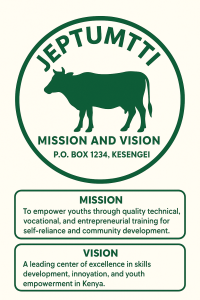
1. Introduction
Child care and protection involves promoting the well-being, safety, and development of children. It ensures that every child grows up in an environment free from abuse, neglect, exploitation, and discrimination. It is guided by national laws, community values, and international conventions such as the UN Convention on the Rights of the Child (UNCRC) and the African Charter on the Rights and Welfare of the Child (ACRWC).
2. Objectives of Child Care and Protection
-
To safeguard children from abuse, neglect, and exploitation.
-
To promote children’s physical, emotional, social, and moral development.
-
To strengthen family and community capacity to care for children.
-
To ensure that children’s rights are respected and upheld.
-
To rehabilitate and reintegrate children in need of care and protection.
3. Principles of Child Care and Protection
-
Best Interest of the Child – All decisions must prioritize what benefits the child most.
-
Child Participation – Children should be involved in matters affecting them.
-
Non-Discrimination – All children have equal rights regardless of gender, race, or background.
-
Survival and Development – Every child has the right to life, health, education, and development.
-
Family and Community Responsibility – Families and communities play a central role in child care.
4. Rights of the Child
-
Right to life, health, and nutrition.
-
Right to education.
-
Right to protection from abuse, neglect, and exploitation.
-
Right to identity and nationality.
-
Right to participation and expression.
-
Right to leisure and play.
5. Forms of Child Abuse
-
Physical abuse – Inflicting bodily harm or injury.
-
Emotional abuse – Causing emotional distress through threats, insults, or neglect.
-
Sexual abuse – Involvement of a child in sexual activities.
-
Neglect – Failure to provide basic needs (food, shelter, clothing, medical care).
-
Child labour and exploitation – Engaging children in harmful or excessive work.
6. Indicators of Child Abuse
-
Unexplained injuries or bruises.
-
Sudden changes in behavior or performance.
-
Poor hygiene or malnutrition.
-
Withdrawal, fearfulness, or aggression.
-
Reluctance to go home.
7. Child Protection Systems
-
Formal systems: Children’s departments, police, judiciary, child protection units, and social services.
-
Informal systems: Families, religious institutions, community elders, and local organizations.
-
Referral systems: Networks that link abused or vulnerable children to services such as counseling, healthcare, or legal aid.
8. Role of Caregivers and Professionals
-
Identify and report suspected abuse.
-
Provide physical and emotional support.
-
Ensure a safe and nurturing environment.
-
Educate families on positive parenting.
-
Collaborate with community and legal structures.
9. Legal and Policy Framework
-
Kenya Constitution (2010) – Article 53 emphasizes children’s rights.
-
Children Act (2022) – Protects children from abuse and exploitation.
-
National Council for Children’s Services (NCCS) – Coordinates child welfare programs.
-
International Laws: UNCRC, ACRWC.
10. Community-Based Child Protection
-
Awareness creation and education on children’s rights.
-
Strengthening community-based child protection committees.
-
Supporting orphans and vulnerable children (OVCs).
-
Promoting child-friendly schools and safe environments.
11. Challenges in Child Protection
-
Poverty and unemployment.
-
Cultural beliefs and practices (e.g., early marriage, FGM).
-
Weak enforcement of laws.
-
Inadequate resources and training.
-
Stigma and lack of community awareness.
12. Strategies for Improving Child Care and Protection
-
Capacity building for caregivers and professionals.
-
Strengthening policy implementation.
-
Community sensitization and advocacy.
-
Establishing child-friendly centers.
-
Promoting family-based care instead of institutionalization.
13. Documentation and Reporting
-
Maintain confidential case records.
-
Use standard reporting forms for suspected abuse.
-
Refer cases to appropriate authorities for action.
-
Follow up and support reintegration of the child.
- Teacher: Admin User

